The celebrated Mr. K tells tales of Superman’s homeworld — and how comics’ first miniseries came to be…
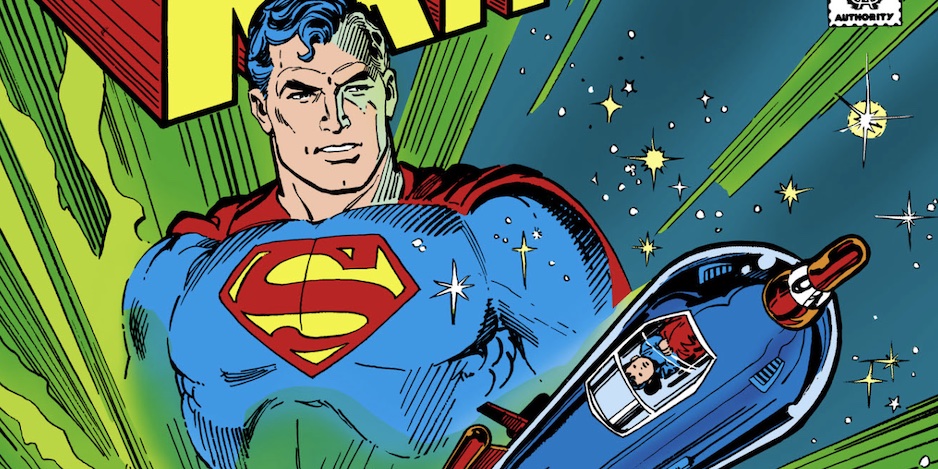
—
UPDATED 4/16/24: World of Krypton — comics’ first miniseries — debuted 45 years ago this month, on April 12, 1979! Perfect time to “reprint” this December 2021 piece by our pal Paul Kupperberg, who wrote the three-parter. Dig it. — Dan
—
DC this week began publishing a new World of Krypton miniseries and it also happens to the anniversary of 1978’s Superman: The Movie. That coincidence led columnist Paul Kupperberg to look back at the original World of Krypton miniseries — which was comics’ first such event.
Dig it.
—
By PAUL KUPPERBERG
I don’t remember when I first learned the name of the planet from which Superman “came to Earth with powers and abilities far beyond those of mortal men,” but in the years that followed I would become quite well versed in the history of the doomed planet and the parents he left behind. For a brief time, I was sort of the world’s official biographer.
The oft-told story: Richard Donner’s Superman: The Movie made its US premiere 43 years ago this week (italics mine, because it’s impossible to believe it’s been 43 years since I breathlessly watched the Man of Steel flash across the big screen on opening day Dec. 15, 1978, in Chicago’s Esquire Theater. The film made its national premiere Dec. 10 in Washington). It was the first serious, big budget attempt at making a comic-book superhero film, and it was a rousing success.
DC Comics was naturally anxious for its comics and licensing programs to cash in on that success, but there was a hitch. Mario Puzo, bestselling author of The Godfather, had written the first and, as it turned out, unusable draft of the screenplay, causing the producers to turn to others (Robert Benton and David and Leslie Newman) to come up with a workable script. I’m just a simple country comic-book writer so I don’t know from Hollywood contracts and WGA rules, but the upshot of that was Mario suing the producers over credit and probably money. Which rendered comic book and prose adaptations of any of the screenplays out of bounds until the legal dispute was settled. (Dan adds: Puzo is also believed to have had an onerous clause in his deal that would have made any adaptation financially impractical.)
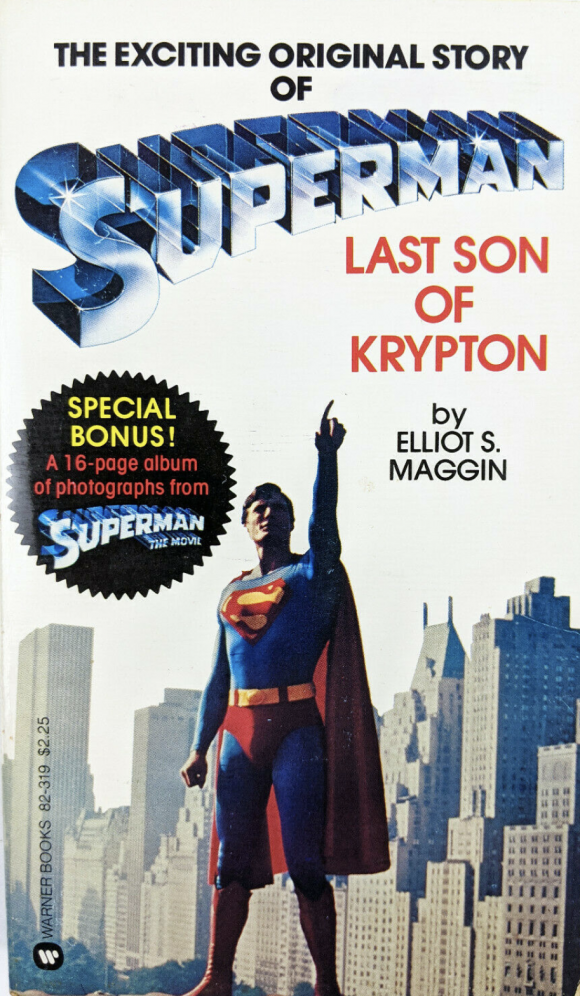
A marketing tie-in, not an adaptation
Elsewhere at DC, a revival of Showcase, the venerable try-out title, had failed (but not before Joe Staton’s and my New Doom Patrol and the mega-crossover Showcase #100 by Paul Levitz, Staton and me, saw print), ending with #104, which, coincidentally, had originally been scheduled to feature the first of my three-issue World of Krypton storyline, to tie in with the original premiere date of the movie. The movie’s release was pushed back and WOK with it, rescheduled for the Showcase #110-112 that never came to be.
When the no-adaptation decree came down, editorial was in something of a quandary as to how to publish the three-issue World of Krypton, which was now in limbo. They understood monthly titles, bi-monthly, even quarterly releases, and one-shot specials were a cinch, but three issues? No one ever deliberately published just three issues of a title; that only happened when a book was abruptly cancelled. The term “miniseries” wasn’t yet in common usage, having only been coined a few years earlier for limited TV series like Roots and Rich Man, Poor Man.
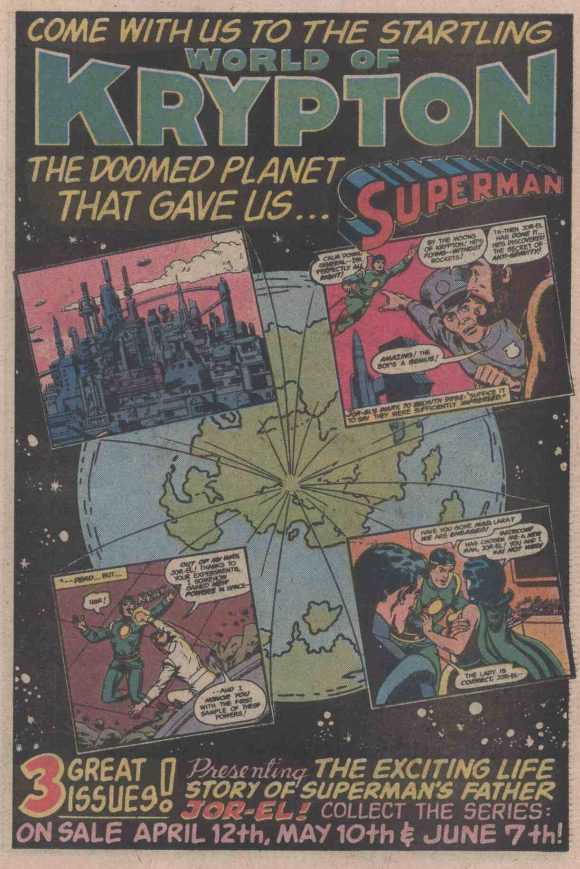
What’s the difference between a three-issue arc (“arc” to describe an individual storyline in an ongoing series, by the way, didn’t come into vogue for another decade with Stephen J. Cannell and Frank Lupo’s crime thriller Wiseguy) in Showcase and a three-issue run of an individual title? Perception, I guess, but in any event, someone decided to just put them out there, World of Krypton #1-3 (July – September 1979). The house ad that ran in DC’s June 1979 line-up, branded WOK as “3 Great Issues! Collect the Series!” and let it go at that. And that, girls and boys, is how the comic book miniseries was born.
As I said, I was no stranger to the world of Krypton. For nearly two years I had been writing the adventures of native Kryptonian heroes Nightwing and Flamebird in the anthology title, Superman Family #183-#194 (May/June 1977-March/April 1979). The 10-page feature (stories drawn by Ken Landgraf and Romeo Tanghal, bookended by tales by Carl Potts and Al Milgrom and Marshall Rogers) was set in the bottle city of Kandor but played with many of the Kryptonian tropes introduced during the decades of Mort Weisinger editorship; in fact, my very first sale to DC Comics was a “World of Krypton” back-up to story editor Denny O’Neil for Superman Family #182 (March/April, 1977). I wasn’t writing Superman, my ambition, but I was Superman adjacent. And I was writing under the editorial supervision of the legendary E. Nelson Bridwell, Julie Schwartz’s assistant.
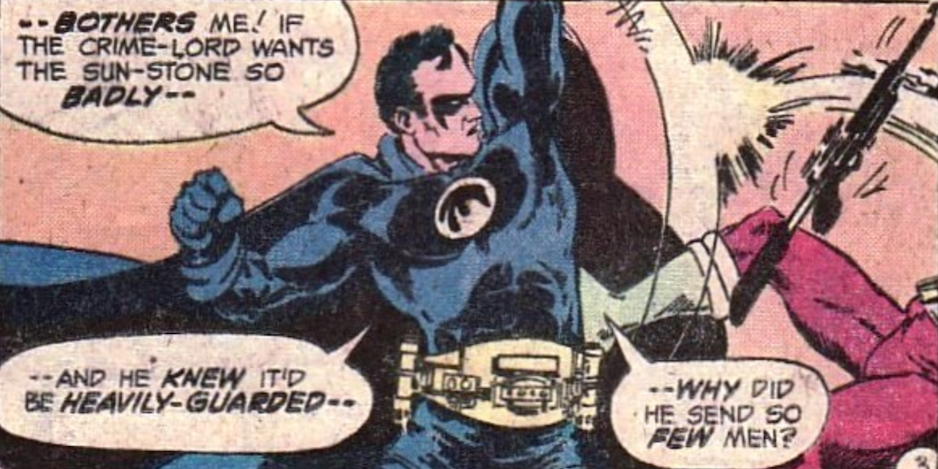
Superman Family #194. Art by Marshall Rogers.
Nelson was a stickler for continuity and accuracy, and he loved footnotes. (I gave Nelson the “13 Favorite” treatment here). He also came to WOK armed with his encyclopedic knowledge of all things Superman: Jor-El, Lara and Kal-El’s lives already laid out in chronological order, based on events that had been depicted in earlier stories from decades past, which I interwove with the ongoing plotline. The outline he handed me had contained way more story than the three issues I had to tell it all in, the same problem I would encounter on the next three-issue miniseries we worked on together, Secrets of the Legion of Super-Heroes (Jan.-March 1981).
The art was credited to Howard Chaykin and Murphy Anderson in the first two issues and Howard and Frank Chiaramonte for the third, but my brother Alan was the ghost layout artist for all three. Everyone involved did a great job, but, man, Murphy’s inks (and likely some of his ghosts/background artists) really drew the entire series together.
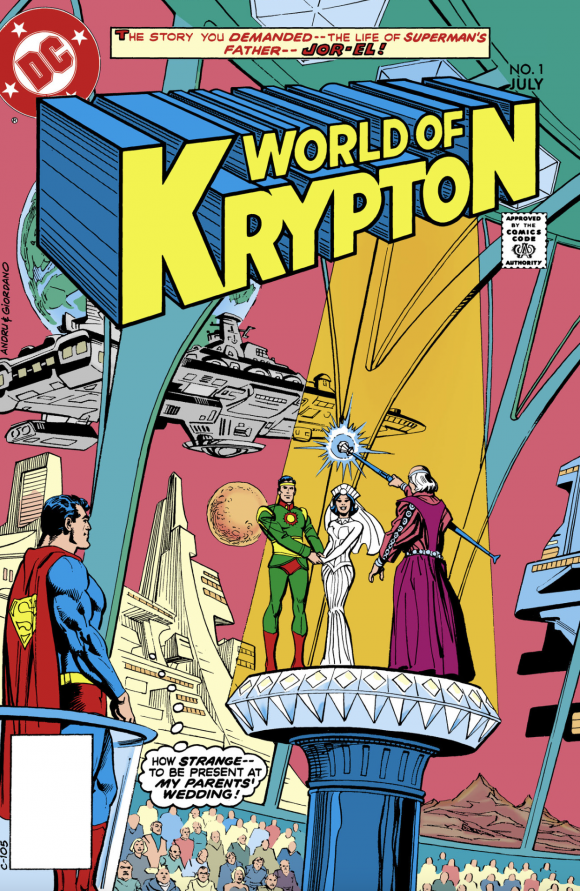
Here then, My 13 FAVORITE WORLD OF KRYPTON MINISERIES MOMENTS – RANKED:
—
13. World of Krypton: The Home of Superman (Tor Books, June 1982). Tor Books took a chance on a couple of comic book reprints in 1982, turning the World of Krypton mini and the first continuity arc of the World’s Greatest Super-Heroes starring Superman newspaper strip (by Martin Pasko, George Tuska and Vince Colletta) into mass market paperbacks. Printed in black and white, heavily edited and redacted, with pages cut up and re-laid out to fit the paperback format, they were a poor substitute for the comics themselves.
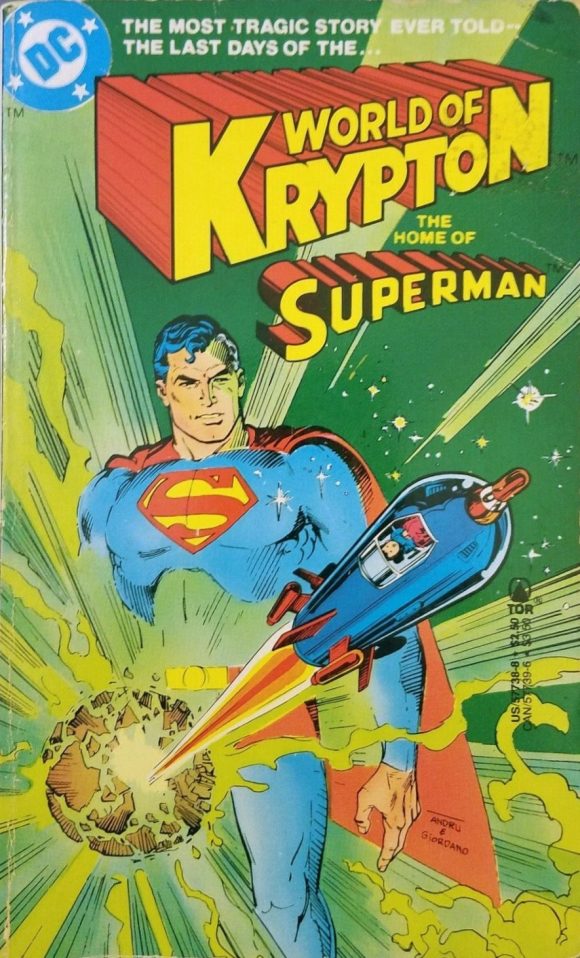
—
12. World of Krypton #2, Page 9. >Choke! Sob!< As he lies dying, Jor-El’s father tells him to grow up. That shouldn’t leave any scars.
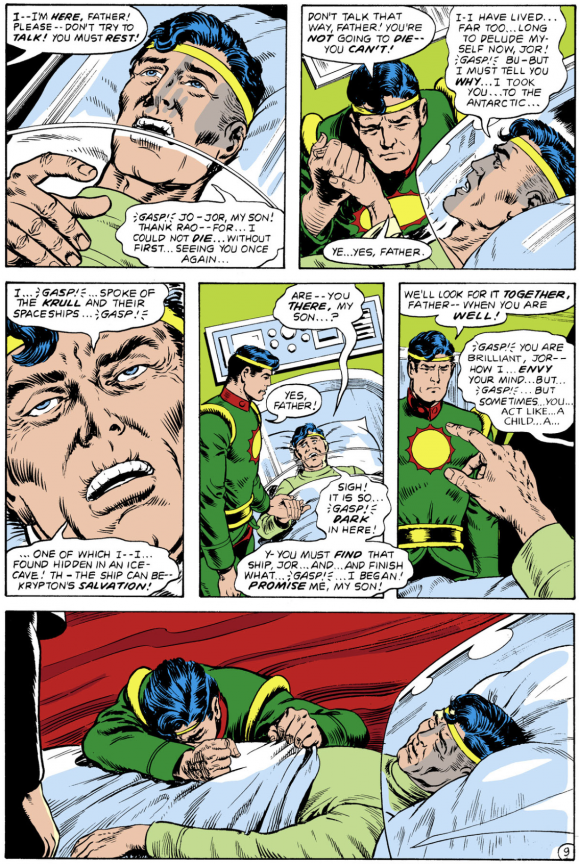
—
11. World of Krypton #3, Page 7. Jor-El sacrifices baby Kal’s beloved puppy Krypto to be a scientific guinea pig. Jor obviously learned his parenting skills from his own old man.
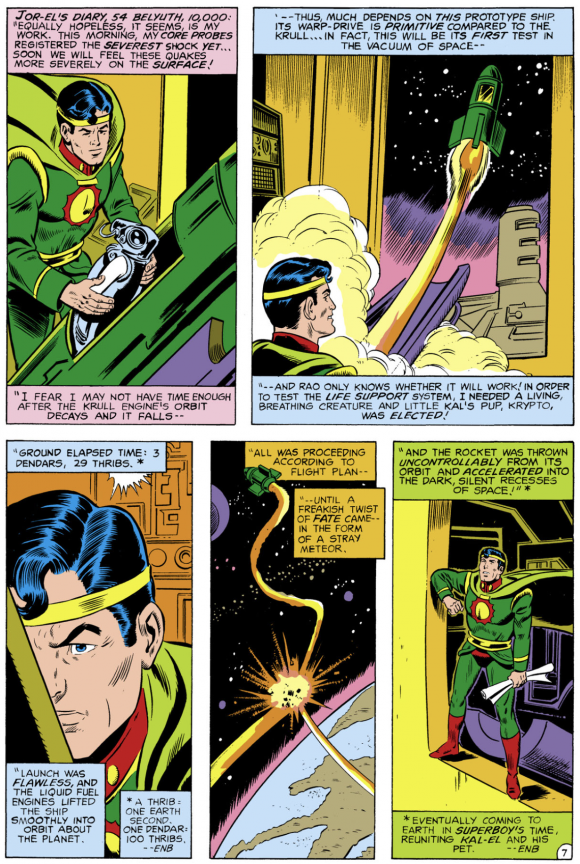
—
10. World of Krypton #1, Page 22. Oh, scientifically rational Krypton! Even romance had been reduced to an algorithm and marriages were analyzed and approved by Matricomp, the marriage computer. But not even the coldly calculating Matricomp could help falling in love with the lovely Lara Lor-Van.

—
9. World of Krypton #1, Page 15. Enforced mind control on criminals? Check!
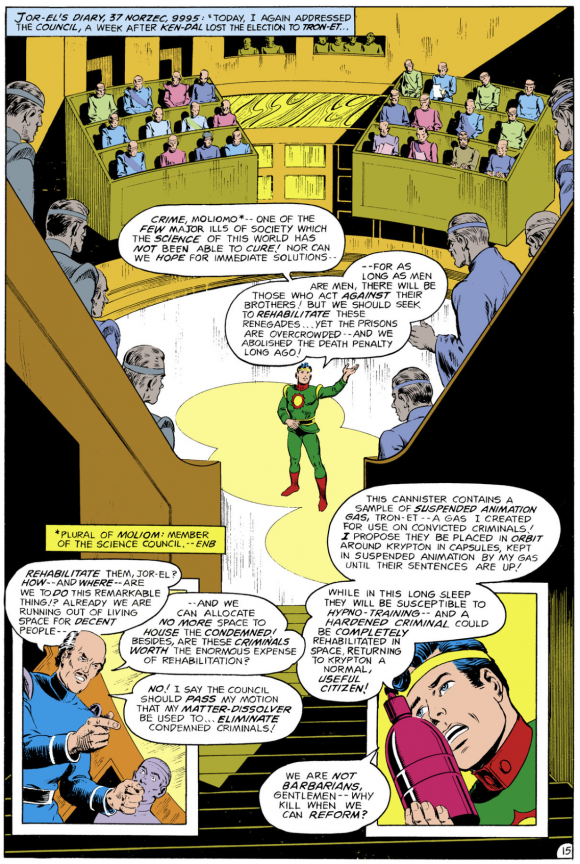
—
8. World of Krypton #2, Page 7. It was like we were predicting the climate change debate, right? Also, a classic example of an E. Nelson Bridwell edit; he added the term “moliomo” to Jor-El’s first word balloon, then inserted a footnote to explain what it meant.
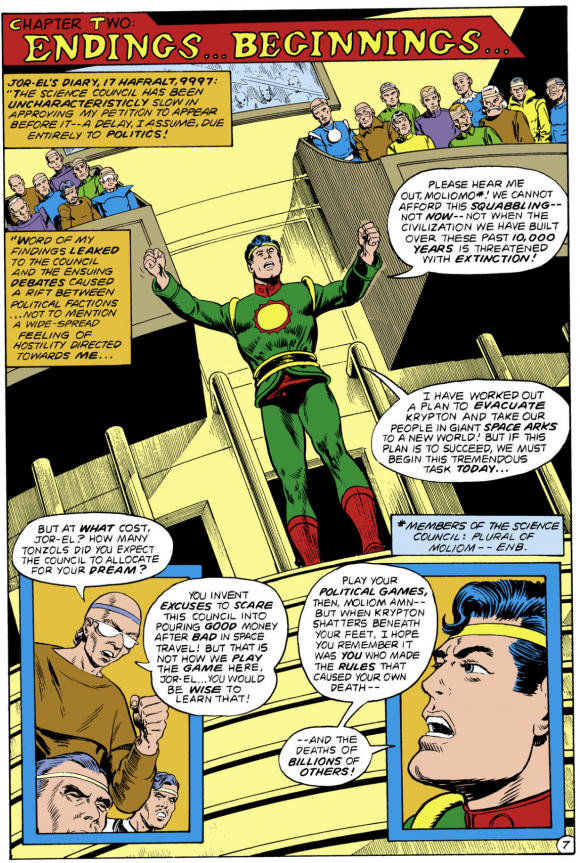
—
7. World of Krypton #1, Page 3.5 (formerly known as Page 4). Sometime between the creation of WOK #1 and #2, DC must have changed the story page count; the omitted fourth page of the first issue later turned up at Heritage Auctions. Its omission didn’t really affect the story per se, but it would have been nice to have kept the little character bit and motivating moment for the young Joe-El in the story.
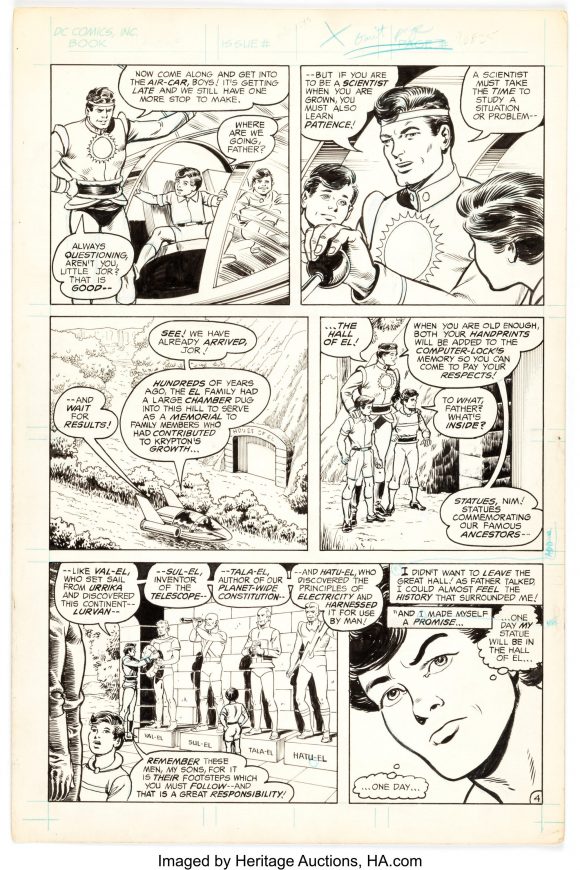
—
6. World of Krypton #1, Page 5. Jor-El had a nasty cousin named Kru-El. Swear he did. Nelson made me put him in the story.
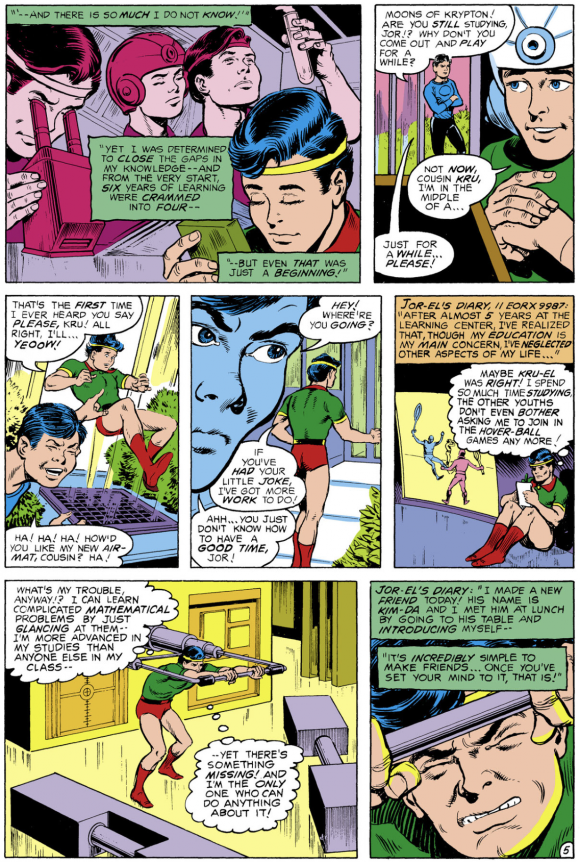
—
5. World of Krypton #2, Page 21. Jax-Ur’s personal dream shattered… along with one of Krypton’s moons, Wegthor. In response to this totally avoidable tragedy, Jax-Ur was heard to say, “Blast! My aim was slightly off!”
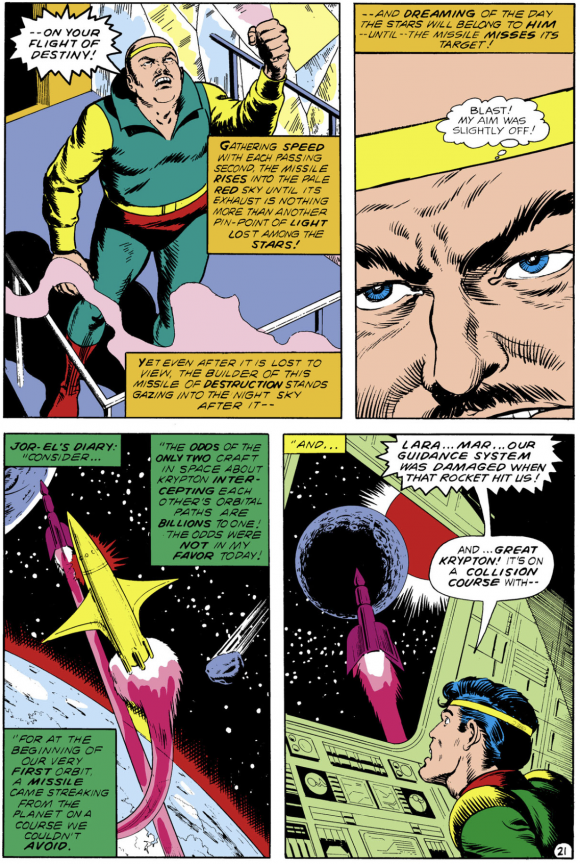
—
4. World of Krypton #2 Cover by Ross Andru and Dick Giordano. A pivotal moment in Superman’s history, beautifully depicted by two of the top talents in the business.
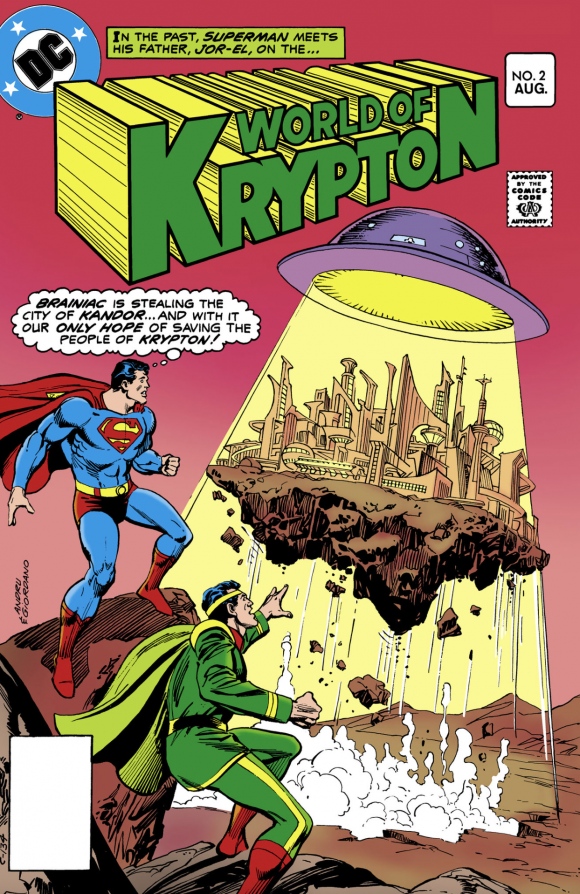
—
3. World of Krypton #3 Cover by Ross Andru and Dick Giordano. The moment I went to Ross Andru with this printed cover in hand, laughing, and said, “You guys did this on purpose, right?” Ross, as sweet and guileless a man as I’ve ever met, looked at the cover without comprehension and said, “What’s wrong with it?” “It’s beautiful.” I said, “But don’t you think it’s a little suggestive?” Ross stared at it a moment longer before realization dawned and then he chuckled good naturedly and said, “I was wondering why Dick laughed when I showed him the pencils.”
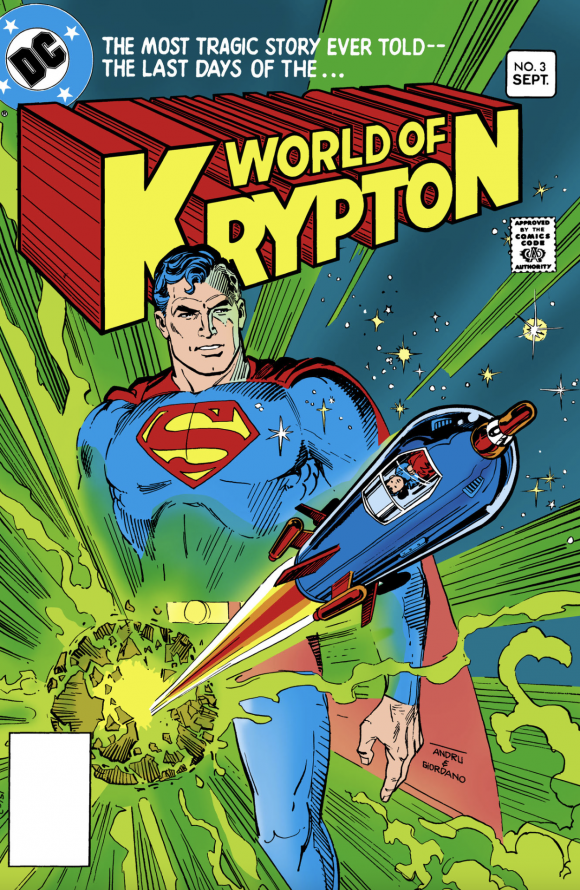
—
2. World of Krypton #3, Page 19. The destruction of Krypton, sans Superman’s crotch.
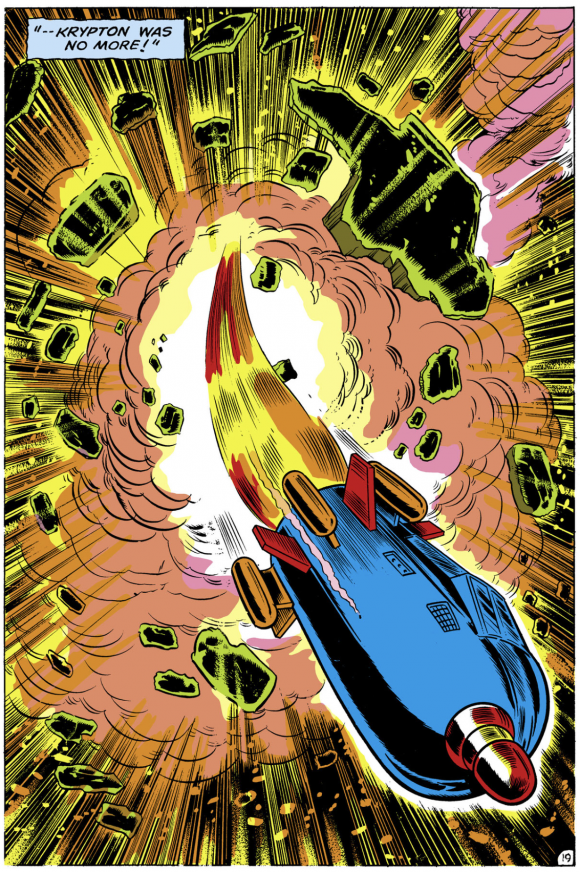
—
1. World of Krypton #1 Cover by Ross Andru and Dick Giordano. The moment Ross Andru gave me this.
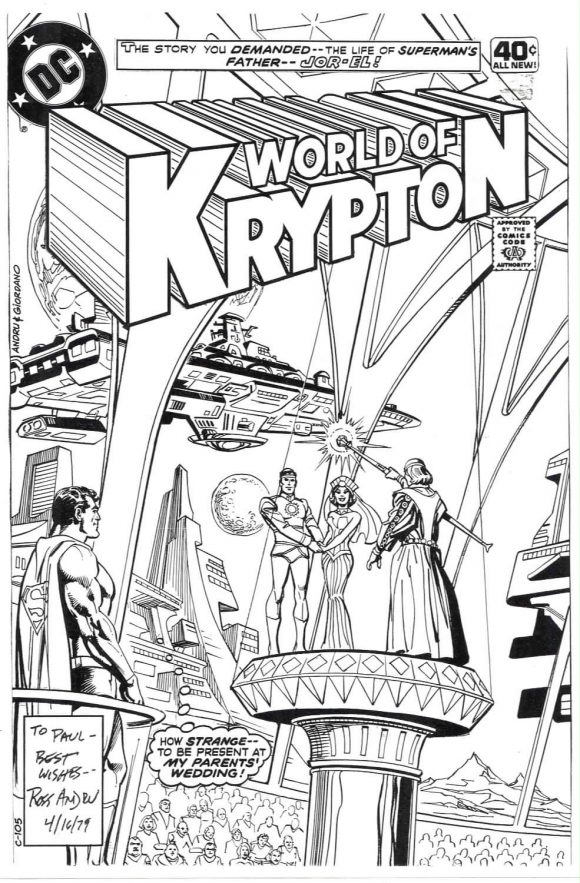
—
MORE
— PAUL KUPPERBERG: My 13 Favorite E. NELSON BRIDWELL Projects. Click here.
— PAUL KUPPERBERG: My 13 Favorite COMIC BOOK NOVELS. Click here.
—
Sure, you know Paul Kupperberg as the prolific writer of over a thousand comic books for such characters and series as Superman, Aquaman, Doom Patrol, Vigilante, Life with Archie, Bart Simpson, Scooby-Doo, and dozens more for DC Comics, Archie Comics, Bongo Comics, and others, and that he is also the creator of the series Arion, Lord of Atlantis, Checkmate and Takion, and is a former editor for DC, Weekly World News, and WWE Kids Magazine. But Paul is also the author of numerous books, including the superhero novel JSA: Ragnarok and the comics industry-based murder mystery, The Same Old Story, not to mention (but we will anyway) Paul Kupperberg’s Illustrated Guide to Writing Comics, I Never Write for the Money, But I Always Turn in the Manuscript for a Check, Direct Comments: Comic Book Creators in their Own Words, The Unpublished Comic Book Scripts of Paul Kupperberg and Son of the Unpublished Comic Book Scripts of Paul Kupperberg. You can follow Paul at PaulKupperberg.com and at Crazy8Press.com.
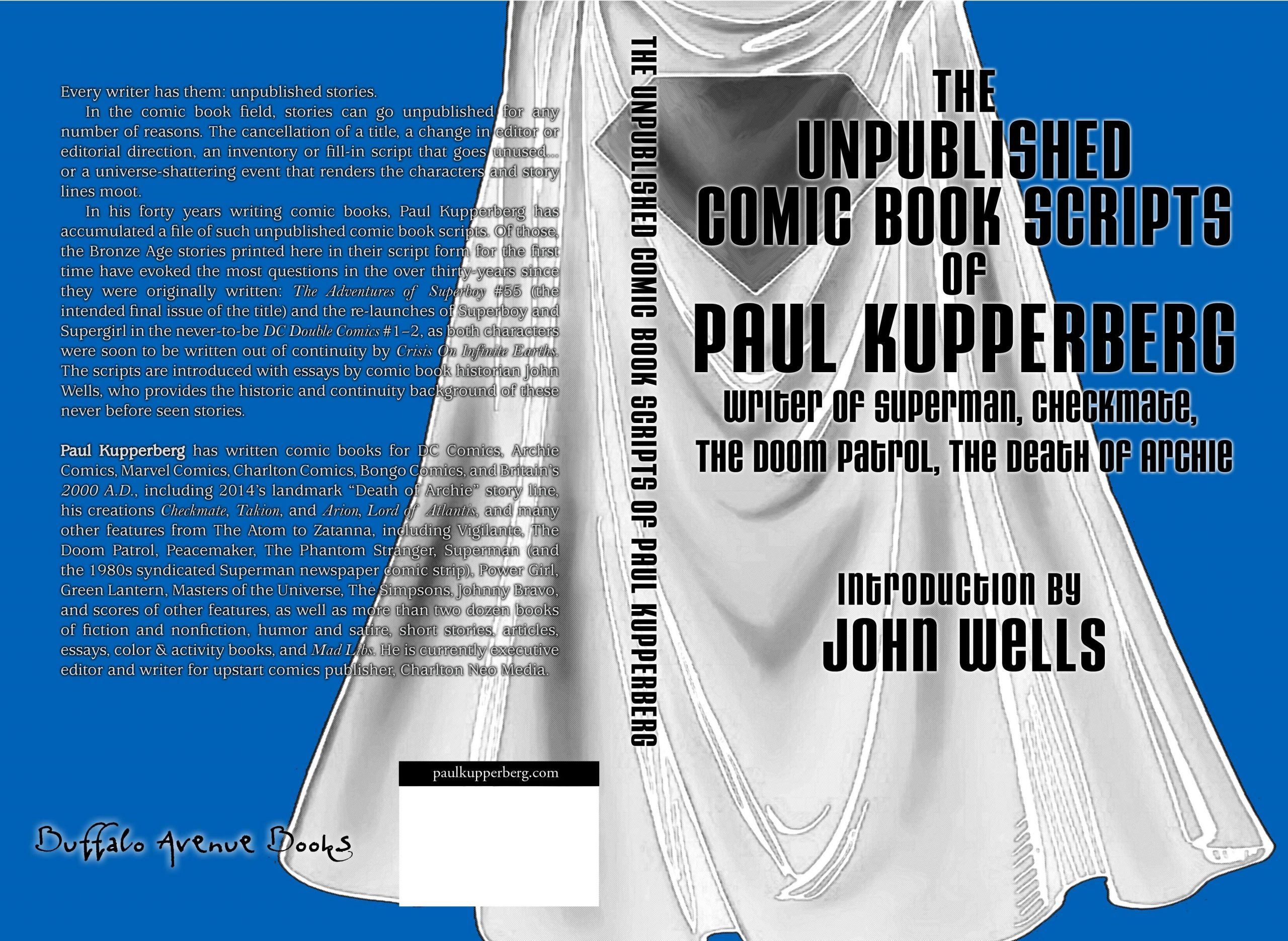

April 17, 2024
The best thing WOK ever did was make you actually care for the doomed people on the planet. Especially Jor-El and Lara.
April 17, 2024
One long troll page. Like Jor-El said “you act like a child”. 😉